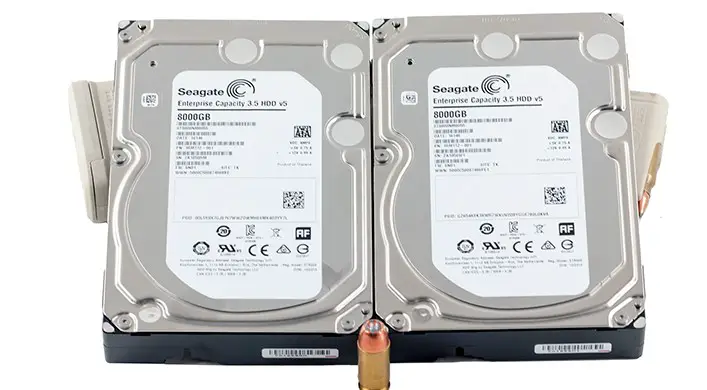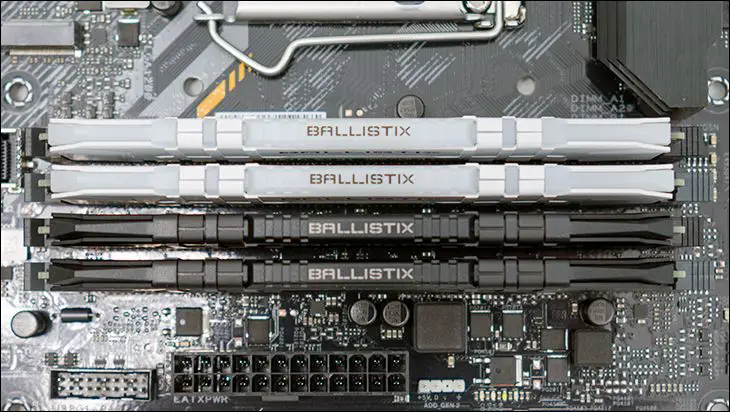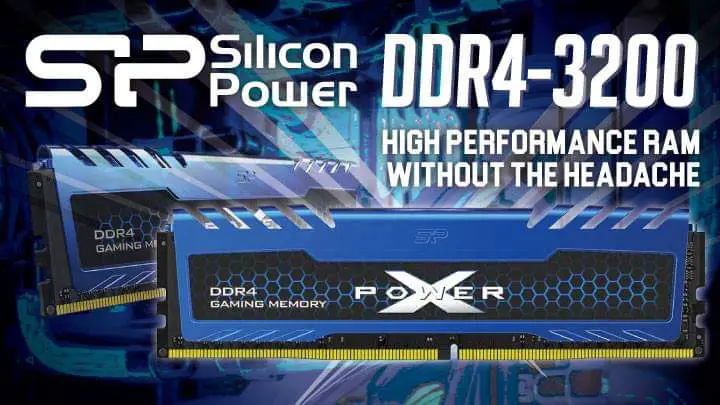Read Bandwidth
For this benchmark, HD Tune Pro was used. It shows the potential read speed which you are likely to experience with these storage devices. We don’t put much stock in Burst speed readings and thus we no longer included it. The most important number is the Average Speed number. This number will tell you what to expect from a given drive in normal, day to day operations. The higher the average the faster your entire system will seem.
 Write Performance
Write Performance
For this benchmark HD Tune Pro was used. To run the write benchmark on a drive, you must first remove all partitions from that drive and then and only then will it allow you to run this test. Unlike some other benchmarking utilities the HD Tune Pro writes across the full area of the drive, thus it easily shows any weakness a drive may have.
We actually had to double check and rerun these tests as we simply did not believe the numbers this drive was posting in and out of RAID configurations. In fact this level of performance was so high we actually pulled them and tried them in another testbed to make sure some unknown RAM caching bug was boosting performance. It wasn’t. Instead this drive is just that fast.
ATTO Disk Benchmark
The ATTO disk benchmark tests the drives read and write speeds using gradually larger size files. For these tests, the ATTO program was set to run from its smallest to largest value (.5KB to 8192KB) and the total length was set to 256MB. The test program then spits out an extrapolated performance figure in megabytes per second.
The power curves of both the single and RAID results are downright spectacular. This new drive not only starts out faster than its predecessor performance accelerates even faster than any drive we have seen to date. Color us impressed.
Crystal DiskMark
Crystal DiskMark is designed to quickly test the performance of your hard drives. Currently, the program allows to measure sequential and random read/write speeds; and allows you to set the number of tests iterations to run. We left the number of tests at 5 and size at 100MB.
We are simply amazed at how fast this drive is. Historically the only way to noticeably improve small file performance was to either increase rotational velocity, or increase aerial density – and even then 10,000rpm drive usually were still ‘better’ than the ‘slower’ 7200rpm models. Seagate did neither, and yet have been able to create a drive that is faster than any model we have seen to date. That is truly impressive engineering.
AS-SSD
AS-SSD is designed to quickly test the performance of your drives. Currently, the program allows to measure sequential and small 4K read/write speeds as well as 4K file speed at a queue depth of 6. While its primary goal is to accurately test Solid State Drives, it does equally well on all storage mediums it just takes longer to run each test as each test reads or writes 1GB of data.
The very fact that in single and RAID scenarios the EC 3.5 v5 8TB is simply dominating all other drives is truly impressive. Put simply when you combine amazing aerial densities with twelve read/write heads, and then backstop it all with 256MB of chache the results are nothing short of astonishing. Even compared to a 10,000rpm VelociRaptor this new series simply outcompetes it.
IOMETER: File Server Test
To test each drive we ran 6 test runs per device (1,4,16,64,128,256 queue depth) each test having 8 parts, each part lasting 10 min w/ an additional 20 second ramp up. The 6 subparts were set to run 100% random, 75% read 25% write; testing 512b, 4k,8k,16k,32k,64k size chunks of data. When each test is finished IOMeter spits out a report, in that reports each of the 6 subtests are given a score in I/Os per second. We then take these 8 numbers add them together and divide by 6. This gives us an average score for that particular queue depth that is heavily weighted for file server usage.
These drive series were meant for the server environment so it is not all that surprising to see them shine in this Enterprise orientated test. With that being said they did not just outshine the competition they make the others look downright slow in comparison. More importantly these new v5 drives and their massive cache love deep queue depths like no other hard drive series before it. Since Enterprise environments are by their very nature deep queue depth environments this makes this new series perfect at their intended goal: near-line storage domination.

















